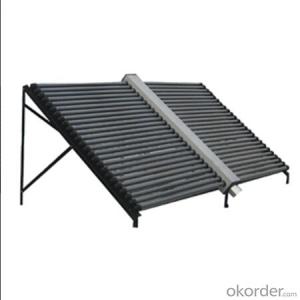Goodwe Solar Inverter
Goodwe Solar Inverter Related Searches
100w Solar Panel With Inverter Best Solar Panel Inverter 5000 Series Cast Aluminum Plate Portable Solar Panel Inverter First Solar Series 6 Module 12 Volt Solar Panel Inverter Plastic Solar Lanterns Buy Solar Panel Inverter Solar Panel Inverter Cost Solar Panel Without InverterHot Searches
Type Of Inverter For Solar Types Of Inverter For Solar Used Solar Inverter For Sale Inverter Size For Solar System Solar Edge Inverter For Sale 5kw Solar Inverter For Sale Solar Inverter For Sale Solar Inverter For Battery Solar Inverter For Split Ac Solar Inverter For Laptop Solar Inverter For Fridge Solar With Inverter Price Solar Inverter With 2 Battery Solar Inverter Price In China Best Solar Inverter In China Solar Inverter Price In Dubai Solar Inverter Price In Uae Solar Inverter Price In Kenya Solar Inverter Price In Kerala Solar Hot Water Collectors For SaleGoodwe Solar Inverter Supplier & Manufacturer from China
Okorder.com is a professional Goodwe Solar Inverter supplier & manufacturer, offers integrated one-stop services including real-time quoting and online cargo tracking. We are funded by CNBM Group, a Fortune 500 enterprise and the largest Goodwe Solar Inverter firm in China.Hot Products
FAQ
- Yes, a solar inverter can be used with a solar-powered air conditioner. A solar inverter converts the direct current (DC) produced by solar panels into alternating current (AC) which is required to power the air conditioner. By using a solar inverter, the solar power generated can be utilized efficiently to run the air conditioner, making it a sustainable and cost-effective solution for cooling.
- To calculate the efficiency of a solar inverter, you need to divide the output power by the input power and multiply the result by 100 to get a percentage. The formula is: Efficiency = (Output Power / Input Power) * 100.
- The role of a solar inverter in fault ride-through capability is to help maintain the stability and reliability of the power grid during faults or disturbances. By detecting and responding to voltage and frequency variations caused by faults, the solar inverter can adjust its output and remain connected to the grid, ensuring continuous power supply. This capability is essential for grid stability and allows solar power systems to contribute to the overall reliability of the electrical network.
- A solar inverter handles voltage regulation by constantly monitoring the voltage from the solar panels and adjusting its output voltage accordingly. It ensures that the voltage produced by the panels matches the required voltage for the electrical grid or the connected devices. This regulation is crucial to maintain stable and reliable power supply, protect the equipment from voltage fluctuations, and ensure optimal energy conversion efficiency.
- How the output voltage of the PV inverter and the grid-connected voltage are determined
- due to the higher penetration rate of the car to go out to work or travel can be connected with the inverter battery drive electrical and various tools work. The car inverter output through the cigarette lighter is 20W, 40W, 80W, 120W to 150W power specifications. And then a large number of power inverter power
- The maximum AC current output of a solar inverter depends on its size and rating. It can range from a few amps to several hundred amps, typically ranging between 5-100 amps for residential inverters and going up to higher currents for commercial or utility-scale inverters.
- To calculate the maximum power point voltage for a solar inverter, you need to consider the voltage at which the solar panel generates the highest power output. This can be determined by using the voltage-current (V-I) curve of the solar panel and finding the point where the product of voltage and current is maximum. By analyzing this curve, the maximum power point voltage can be identified, which is crucial for optimizing the performance of a solar inverter.
- A solar inverter handles voltage fluctuations from the solar panels by continuously monitoring the output voltage and adjusting it to maintain a stable and consistent level of voltage. It employs advanced control algorithms and power electronics to regulate and stabilize the voltage, ensuring optimal energy conversion and compatibility with the electrical grid. This helps protect the inverter and other connected devices from damage while maximizing the energy output from the solar panels.














































